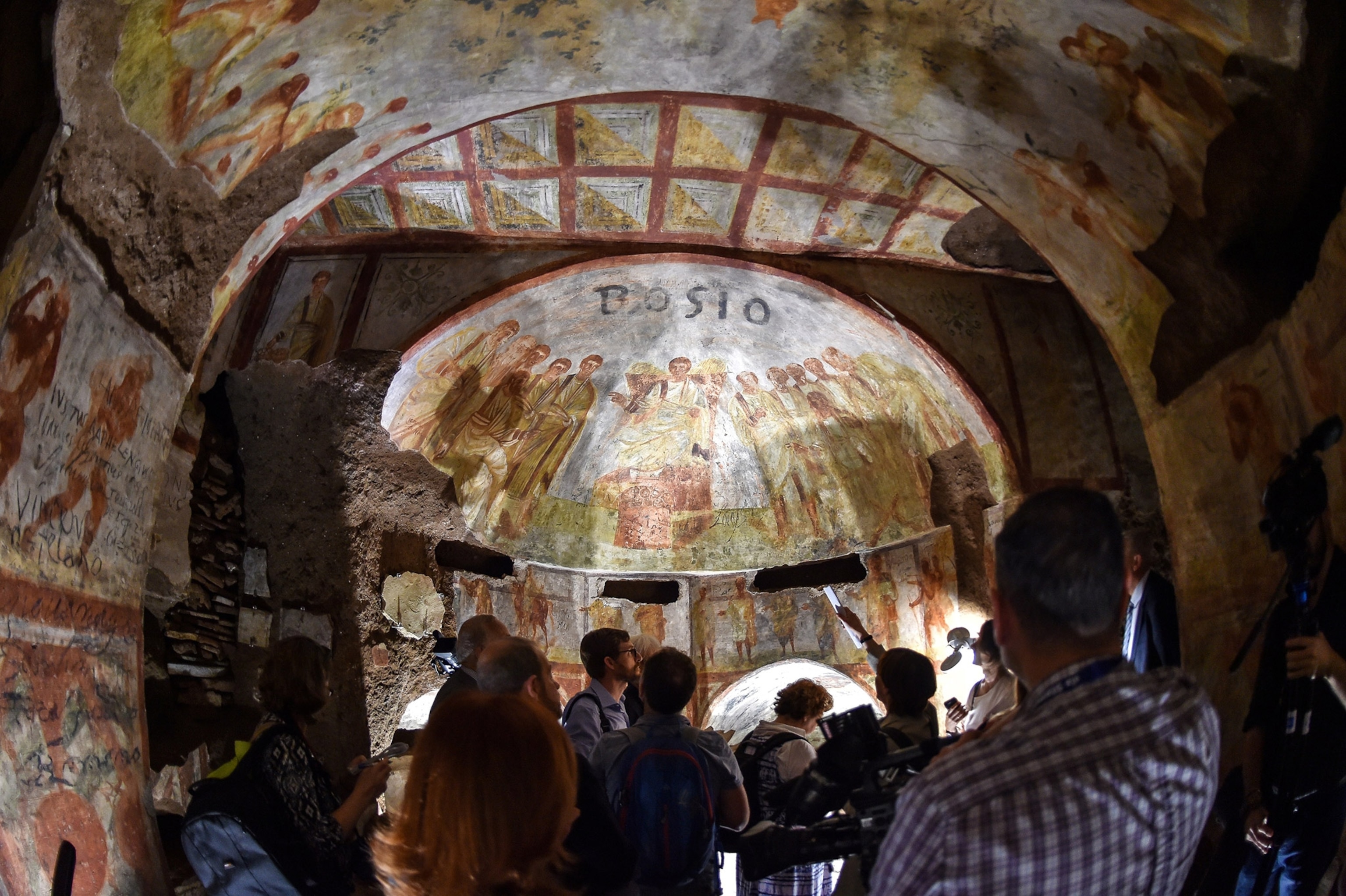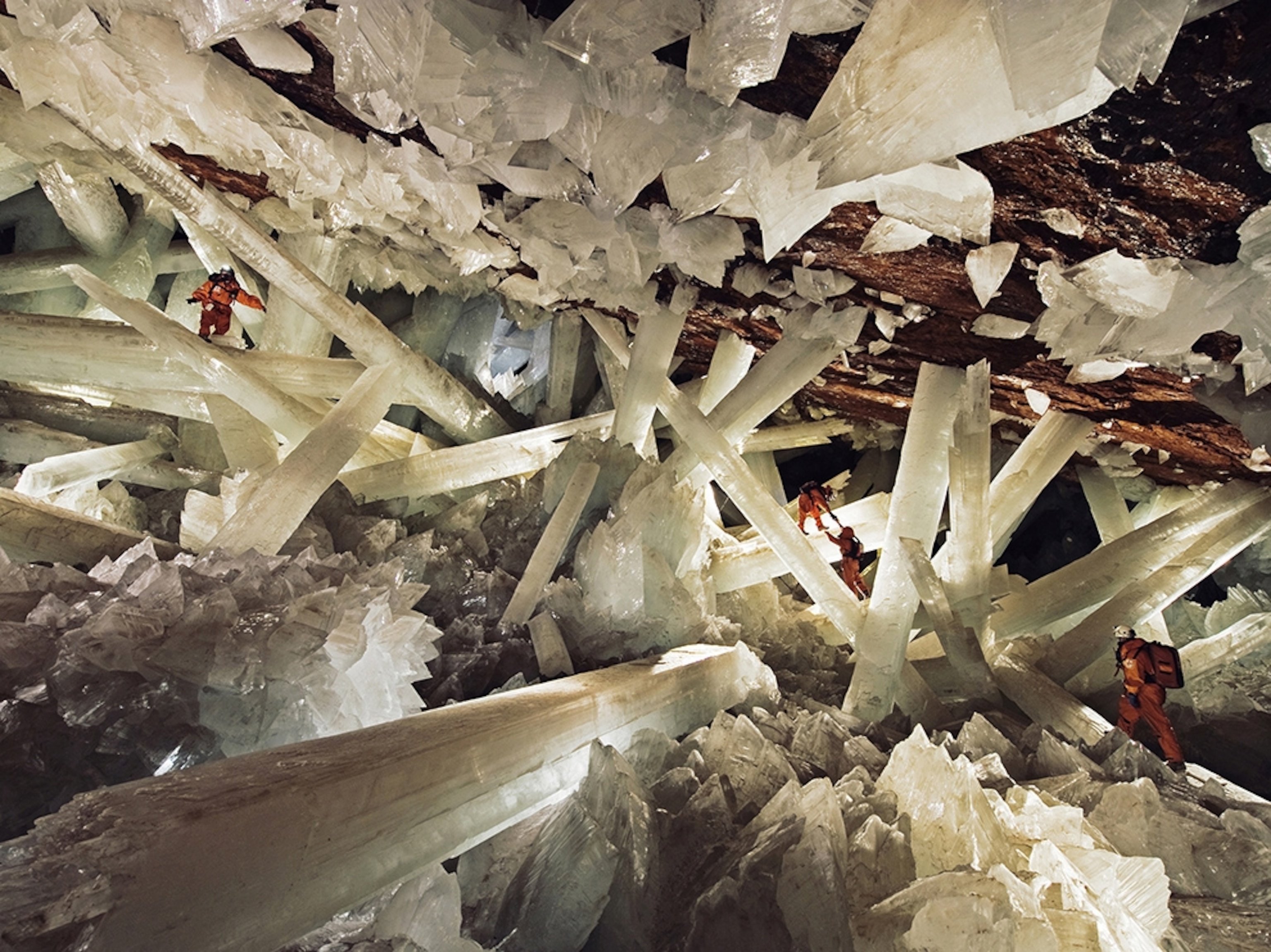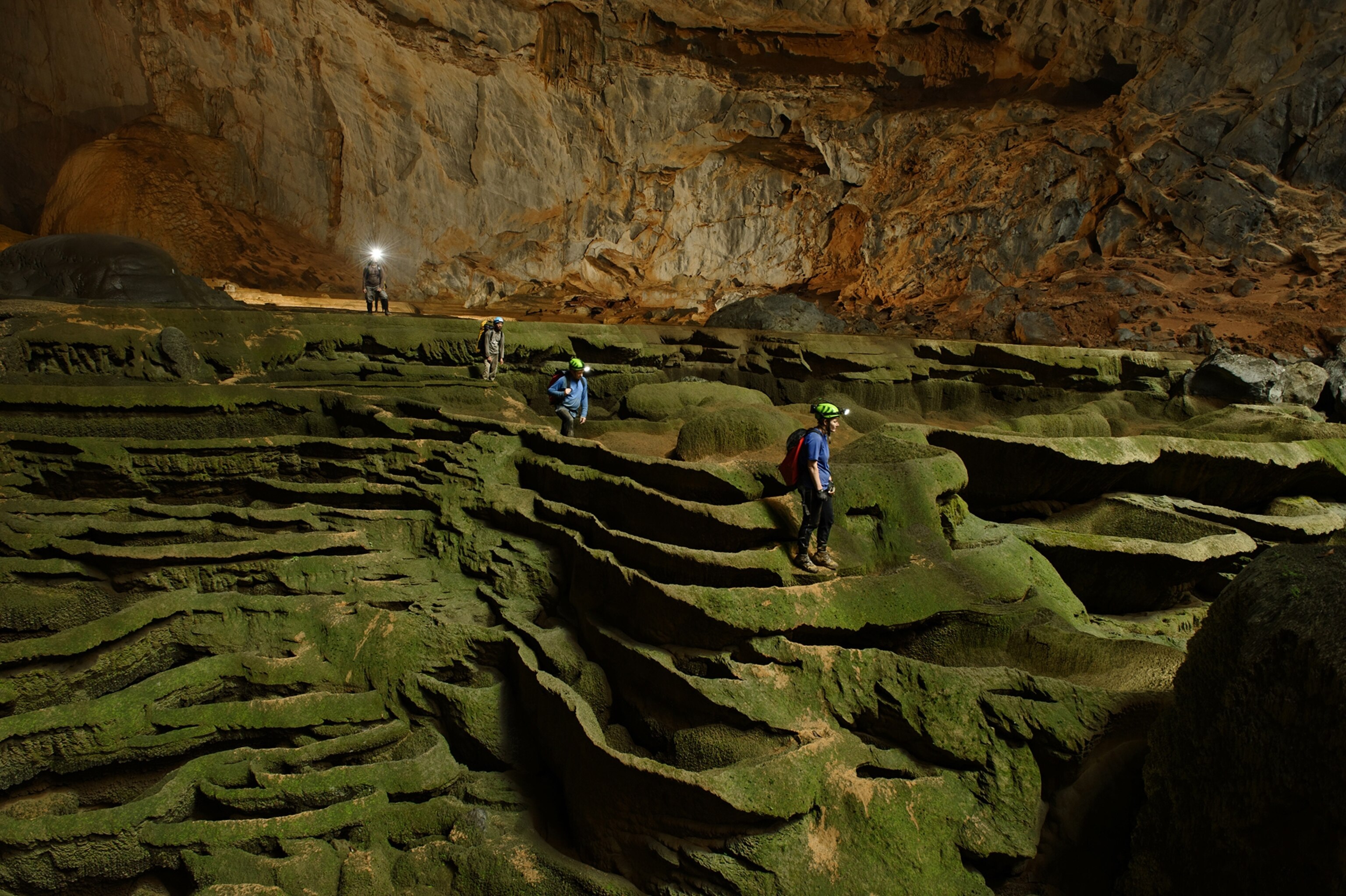
9 of Europe’s underground marvels
Discover subterranean secrets, from Rome’s bone-covered catacombs to Istanbul’s sunken palace.
People have inhabited Europe for thousands of years, building new empires atop old ones. That’s precisely why the continent is such a fascinating place for underground exploration—travelers can look into the past through well-preserved subterranean cities, hideouts, and tombs.
Out of sight and out of mind, some of the oldest sites were lost to humanity for centuries before being rediscovered by accident. Ice Age and Neanderthal cave shelters throughout Spain and France were still being discovered by shepherds, farmers, and hunters as recently as the mid-1900s. It’s said the Basilica Cistern in Istanbul—built during the early Roman Empire and then forgotten—was rediscovered a thousand years later when a visiting scholar learned nearby residents could pull water and catch fish through their floorboards. From wartime bunkers to historic mines, these European sites will make you want to head underground.
Descend into Rome’s striking catacombs and crypts
Some of the oldest and longest burial tunnels in the world unfurl in a macabre labyrinth beneath Rome’s bustling streets. These underground cemeteries shed light on historic burial practices of the city’s Christian and Jewish communities dating to the first century. Some sections of the miles-long catacombs have been rarely explored, and experts believe more remain undiscovered. Only some are open to visitors: Popular access points include the older sections at the catacombs of St. Domitilla, the fresco-lined tunnels within the catacombs of Priscilla, and the Museum and Crypt of the Capuchin Friars, an ossuary featuring ornate displays of the bones and mummified skeletons of more than 4,000 friars. (Bones of 30,000 plague victims decorate this church.)

Go beneath the Czech city that invented Pilsner
A series of chilly, 13th-century tunnels, passageways, and wells serve as underground refrigerators and beer cellars beneath the city that invented Pilsner beer. In the city of Pilsen, an hour’s drive southwest of Prague, visitors can navigate restored tunnel sections that were used to store food, as water wells, and as secret, subterranean fortification in the Middle Ages. Tours of the Pilsen Historical Underground end with a beer tasting at the ground-level Brewery Museum. Na zdraví!
Stroll through a salt mine in Germany
Once as valuable as gold, salt has been continuously extracted from the Berchtesgaden Salt Mine near the Austrian border in the Bavarian Alps for more than five centuries. Guided visits head 2,133 feet (650 meters) underground to explore the historical and cultural importance of salt mining in the region, and include walks through an elaborate salt grotto, a ride on an old mining train, two long slides into underground caverns, and a short boat ride on Spiegelsee, a subsurface saline lake.

Discover an underground city in France
Naours began as a limestone quarry in the 12th century, and evolved into a full-fledged underground city. During its heyday in the 17th century, it housed some 3,000 people. Lost for more than a century and then rediscovered just before World War I, the tunnels contained hundreds of rooms and two dozen galleries that served as an important respite for troops on the Western Front during the war. Thousands of graffiti marks by French, English, Scottish, Irish, Australian, and American soldiers provide insight to the time. A new, nearby Graffiti Museum, explores life behind the front lines of the Great War.
Tour Barcelona’s bomb shelters
Much of Barcelona’s sub-surface intrigue—including abandoned subway tunnels and an entire underground shopping mall shuttered in 1990—are quirky (and mostly off-limits) curiosities rather than tourist attractions. However, Refugi 307, part of the Museu d’Història de Barcelona in the city’s eastern Poble Sec neighborhood, runs regular tours. It’s one of the largest of Barcelona’s thousands of bomb shelters. Carved into Montjuïc mountain by panicked citizens, the site could shelter some 2,000 people from aerial attacks during the Spanish Civil War in the late 1930s.
Explore Edinburgh’s historic alleyways
Layers upon layers of history mean visitors must head belowground to see Edinburgh’s only preserved, 17th-century street. Beneath the historic Royal Mile, campy period actors at Real Mary King’s Close guide visitors through excavated cobblestone alleyways, courtyards, and rooms while narrating the trials and tribulations of daily life, such as sanitation concerns and plague epidemics. Buried and lost to time, this was the domain of some of Edinburgh’s poorest residents, destined to live at the bottom of the vertically-rising city squalor. Nighttime ghost tours are a popular way to explore the alleyways.
See prehistoric cave art in Spain
A hunter first stumbled upon Altamira in the late 1800s, a natural cave filled with animal bones and incredible rock art dating from around 35,000 to 11,000 B.C. Shielded from the elements for ages, the ochre smears depict bison, horses, figures, and wild boar. Ancient handprints and outlines were also incorporated into the natural undulations in the cave walls. It’s one of 18 Paleolithic cave art sites in northern Spain, together forming a World Heritage site. Though there’s an excellent onsite (and underground) museum with recreations of the cave art, you may have better luck seeing originals in some of the other Cantabrian caves. In order to preserve its paintings, only five, randomly chosen museum visitors can go inside each week. (Discover 3 incredible cave art sites in Europe.)

Wander Istanbul’s sunken palace
Yerebatan Sarayi, or Sunken Palace, is the accurate local descriptor given to this showy underground reservoir embellished under the rule of Eastern Roman Emperor Justinian in A.D. 532. Adjacent to the Hagia Sophia, the Basilica Cistern’s hundreds of huge columns support a space that once contained some 17.5 million gallons of water, ferried away by aqueducts for use in the city above. Today, elevated boardwalks cross the space, where only a small amount of shallow, clear water remains. An elaborate upside-down Medusa head stands watch: It’s said that sculptures of the goddess were placed in sites the Romans wished to preserve.
Visit a brick underworld in Brussels
Visit the cellars of the former Palace of Brussels, thought to be one of the most beautiful palaces in all of Europe in the Middle Ages. Ravaged by fire in 1731, Coudenberg’s ruins were abandoned and leveled to make way for new construction. Now restored, visitors can explore the dusty brick underworld at this archeological site, including the palace’s former storage areas, kitchens, and even a medieval street, whose dirt ceiling was formerly open to the sky. The ground-level Coudenberg Museum showcases clay pipes, armor, and other artifacts uncovered during the site’s excavation.
You May Also Like
Go Further
Animals
- California brown pelicans are starving to death—despite plenty to eatCalifornia brown pelicans are starving to death—despite plenty to eat
- The world's largest fish are vanishing without a traceThe world's largest fish are vanishing without a trace
- We finally know how cockroaches conquered the worldWe finally know how cockroaches conquered the world
- Why America's 4,000 native bees need their day in the sunWhy America's 4,000 native bees need their day in the sun
- Crowdsourcing an anti-poaching movement in South Africa
- Paid Content
Crowdsourcing an anti-poaching movement in South Africa
Environment
- 2024 hurricane season forecasted to be record-breaking year2024 hurricane season forecasted to be record-breaking year
- Connecting a new generation with South Africa’s iconic species
- Paid Content
Connecting a new generation with South Africa’s iconic species - These images will help you see coral reefs in a whole new wayThese images will help you see coral reefs in a whole new way
- What rising temps in the Gulf of Maine mean for wildlifeWhat rising temps in the Gulf of Maine mean for wildlife
- He’s called ‘omacha,’ a dolphin that transforms into a man. Why?He’s called ‘omacha,’ a dolphin that transforms into a man. Why?
History & Culture
- I wrote this article with a 18th century quill. I recommend it.I wrote this article with a 18th century quill. I recommend it.
- Why this Bronze Age village became known as ‘Britain’s Pompeii’Why this Bronze Age village became known as ‘Britain’s Pompeii’
- These modern soldiers put Bronze Age armor to the testThese modern soldiers put Bronze Age armor to the test
- Should couples normalize sleeping in separate beds?Should couples normalize sleeping in separate beds?
- They were rock stars of paleontology—and their feud was legendaryThey were rock stars of paleontology—and their feud was legendary
Science
- Epidurals may do more than relieve pain—they could save livesEpidurals may do more than relieve pain—they could save lives
- Why the world's oldest sport is still one of the best exercisesWhy the world's oldest sport is still one of the best exercises
- What if aliens exist—but they're just hiding from us?What if aliens exist—but they're just hiding from us?
Travel
- This less crowded ancient temple in Laos rivals Angkor WatThis less crowded ancient temple in Laos rivals Angkor Wat
- Visit Rotterdam as it transforms itself into a floating cityVisit Rotterdam as it transforms itself into a floating city
- How to get off the beaten track in Northern LanzaroteHow to get off the beaten track in Northern Lanzarote














